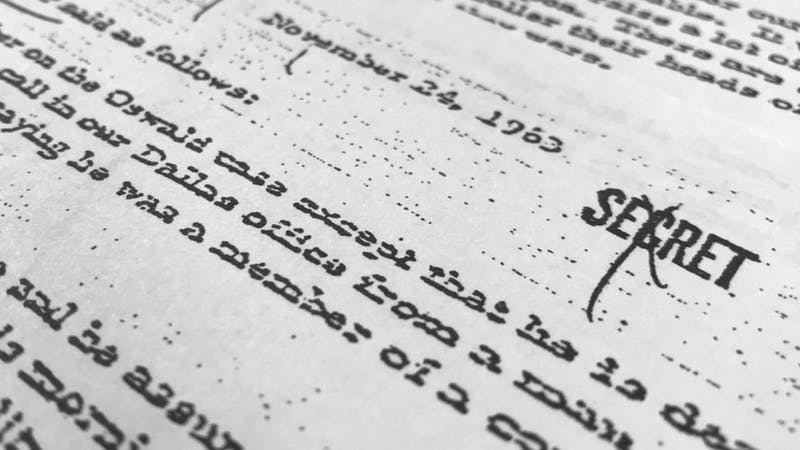
A BRITISH local newspaper received an anonymous call about “some big news” in America shortly before President John F Kennedy was assassinated, documents have suggested.
The revelation was made in documents relating to the killing, which happened on November 22 1963.
A memo to the director of the FBI said the anonymous phone call was made to the senior reporter at the Cambridge News on the day Mr Kennedy was shot in Dallas, Texas. The journalist reported receiving the call at 6.05pm and MI5 calculated it was 25 minutes before the assassination.
National Archives Releases #JFK Assassination Records Online: https://t.co/8nR7gE3p8j, release: https://t.co/GpGoBGWW07
— US National Archives (@USNatArchives) October 26, 2017
Current staff at the newspaper said they did not know who took the call, but they were speaking to people who worked there in the 1960s to find out.
The document, from deputy director James Angleton, said: “The British Security Service (MI5) has reported that at 1805 GMT on 22 November an anonymous telephone call was made in Cambridge, England, to the senior reporter of the Cambridge News.
“The caller said only that the Cambridge News reporter should call the American Embassy in London for some big news, and then hung up.”
Official secret papers on JFK assassination reveal frantic days after killing
Anna Savva, a reporter who currently works at the Cambridge News, said hearing about the call was “completely jaw-dropping”.
“It would have been common knowledge in the office who took the call, but we have nothing in our archive – we have nobody here who knows the name of the person who took the call,” she said.
Scenes in the @CambridgeNewsUK newsroom this morning. We'll get to the bottom of this #jfkdocuments pic.twitter.com/sWx5RNQdNZ
— Josh Thomas (@JoshThomasLDR) October 27, 2017
She added that there was just speculation as to why the anonymous caller chose the Cambridge News and said they had been inundated with media requests.
President Kennedy was shot as he rode in a presidential motorcade in Dealey Plaza at 12.30pm Central Standard Time, which is six hours behind Greenwich Mean Time.
The memo added: “After the word of the President’s death was received, the reporter informed the Cambridge police of the anonymous call and the police informed MI5.
“The important point is that the call was made, according to MI5 calculations, about 25 minutes before the President was shot.
“The Cambridge reporter had never received a call of this kind before and MI5 state that he is known to them as a sound and loyal person with no security record.”
Mystery call about "some big news" was made to the News 25 minutes before JFK was shot #JFKFiles https://t.co/QpZBKjij8U
— Cambridgeshire Live (@Cambslive) October 27, 2017
The memo added that similar anonymous phone calls “of a strangely coincidental nature” had been received by people in the UK over the past year “particularly in connection with the case of Dr Ward” – potentially a reference to Dr Stephen Ward, one of the central figures in the Profumo affair.
A copy of the memo, dated November 26 1963, was released by the National Archives in July this year, but had gone unreported until the latest batch of documents pertaining to the Kennedy assassination were released on Thursday evening.

Enjoy the convenience of having The Sunday Post delivered as a digital ePaper straight to your smartphone, tablet or computer.
Subscribe for only £5.49 a month and enjoy all the benefits of the printed paper as a digital replica.
Subscribe